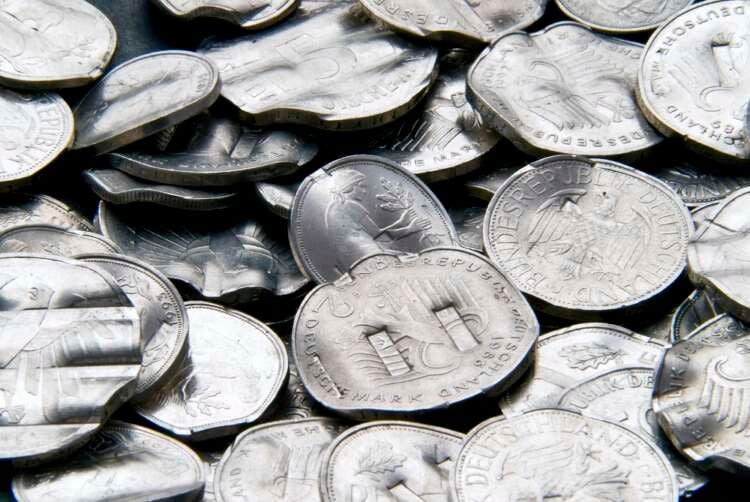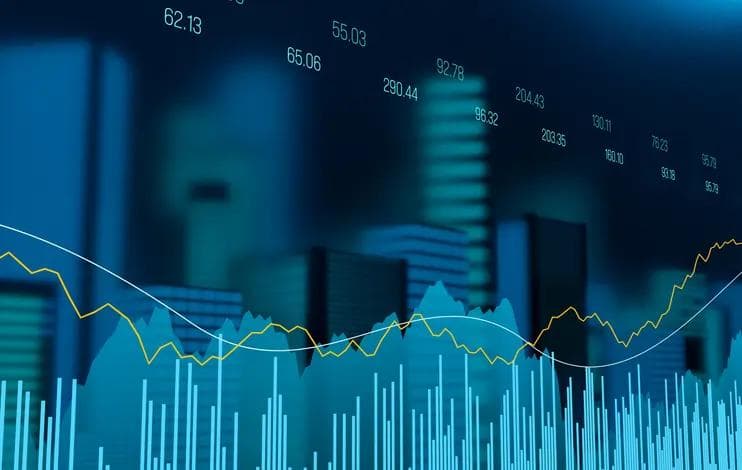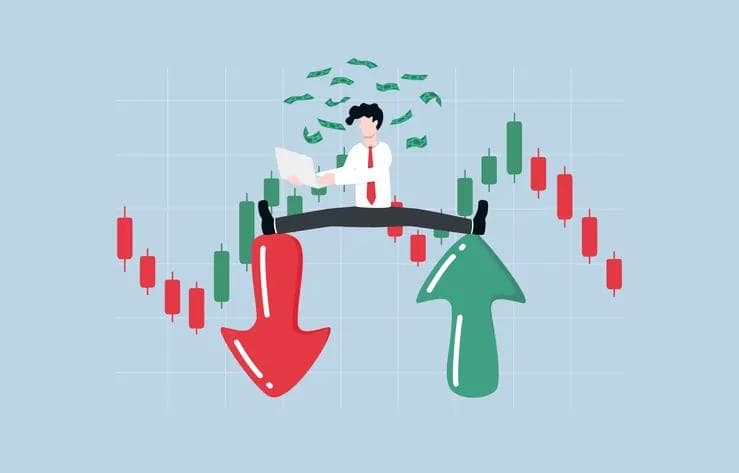Which Is Better: Physical Silver Or Silver ETFs?
Which Is Better: Physical Silver Or Silver ETFs?
Published by Jessica Weisman-Pitts
Posted on August 17, 2021

Published by Jessica Weisman-Pitts
Posted on August 17, 2021

There is no question among experts that investing in silver could be a sensible way to diversify a portfolio while hedging downturns. Nevertheless, the different ways to do so continue to draw many debates. Some old-school investors prefer purchasing their silver bullion at local dealers or shops. Modern day, however, offers a change of pace thanks to the internet. Online bullion dealers and retailers offer secure and discreet sales of millions of silver ounces.
Though perhaps an even bigger change came with the creation of ETFs (Exchange-Traded Funds). First introduced in the 90s, and largely popularized during the recession of 2008, ETFs offered a fresh-new way to invest in silver.
Regardless of your profile as an investor, it is essential to understand the potential benefits and drawbacks of each of those alternatives.
ETFs can be conceived as a digital representation of silver, and operate similar to stocks. They track the price of silver, and each share represents a specific amount of silver in ounces.
Commodity ETFs, as the name suggests, are funds that invest in commodities, such as crude oil, gold or silver. When shares from this kind of ETF represents an actual physical amount of that commodity, stored by the fund management itself, they are called Physically Backed ETFs.
Much like the stock market, when the price of silver goes up, so does the ETFs value. The same goes for downfalls, meaning there is room for gains and losses, in a similar manner to stocks. They work towards an owner who does not wish to worry about storage and overall management of physical assets.
The downside of physically backed funds is the increased costs from delivering, insuring, storing and holding the inventory. As costs add up, an investor might wonder if it wouldn’t have been more advantageous to purchase and store the physical silver themselves.
Futures-based Funds are another type of Silver ETFs, even more popular than the physically backed ones. Share prices are based on futures, forwards and swap contracts incorporated into the funds portfolio. The biggest disadvantage in this kind of ETF is the increased exposure to risks. The fund might turn out to be poorly managed or the futures contracts might turn into a loss.
The main aspect that favors ETFs is their convenience and accessibility. Even with physically backed ETFs, you are free from the responsibilities (yet, not the costs) of holding and storing the silver bullion. However, since acquiring ETFs is done through brokers, there may be fees and taxes involved in the purchase. They are also subject to capital gains taxes.
Overall, ETFs have good liquidity. As easy as they are to purchase, they are to sell. Investors can liquidate their assets or sell short should they feel like preventing a downfall.
Potential aspects that work against ETFs relates to their digital nature. They are subject to counterparty risks, which may be one of the biggest drawbacks. Investors rely upon another party or company, which holds the funds, to meet upon their agreement.
In the event of an emergency, funds allocated to ETF holdings may not be as accessible as owning the physical assets yourself. They rely on internet connection and the digital framework of modern society. Therefore, one potential risk involves hacking and online security.
In a physically backed ETF, should something happen to an investor’s granter’s holdings, the ETF might go under, leaving a number of investors at a loss. This is another instance of being dependent on another party to restore the value of your shares.
On the other hand, while futures-based ETFs have no costs regarding the delivery or storage of the silver bullion itself, you can also expect high expenses due to the need of constantly rolling over futures contracts. In addition, another ever-present risk is that futures-based ETFs are more subject to speculation. The shares from this kind of fund don’t simply track the commodity market price. Their prices vary according to the number of futures contracts bought and sold, so they are essentially at the mercy of traders who might bid high or low in anticipation of ETF trade orders.
Traditional ways of investing in silver bullion come in the form of physical products. Tangible assets can be purchased through bullion dealers and retailers. You can find them in the form of silver coins, silver bars, or silver rounds. Online dealers and brick-and-mortar shops are the main forms of dealing with physical silver bullion.
The value of such silver pieces is determined through the spot price of the sterling metal and a premium added to it. Premiums are a small percentage added over the spot price by the dealer. Premiums are charged in order to cover business costs and guarantee a profit. The added premium amount may vary from one dealer to another. However, online dealers usually are able to ask lower premiums as they have less costs than local dealers and a bigger percentage of the demand.
The ownership of physical silver presents an unique opportunity. Its essence as a tangible asset may be of value to certain investors. The experience of actually holding a precious metal piece yourself is exclusive to owning physical bullion. Apart from that, physical precious metals can act as a hedge against periods of economic uncertainty. In cases of emergency, they can easily be liquidated or even used as a bartering item.
From the standpoint of owning physical silver, there are no counterparty risks involved. They are only bonded to the owner themselves. Besides, contrary to digital ETFs, no risks of hacking are involved.
A few aspects might discourage investors from getting into the physical silver market. Bullion holdings bring about the need for storage. You can store them yourself at your own home or another secure location, or you can pay for a third party storage facility. Storing the bullion yourself has potential theft risks, meaning the proper safety measures should be taken. You might want to consider a safe box for your home and even insurance.
Overall, each alternative has its pros and cons and it is up to each investor to decide, according to their personal profile. ETFs might bring convenience, but also higher risks. Conversely, when you own physical bullion, you are in charge of your own investments. It is up to you to decide when to buy or liquidate your assets. You can also rest assured that you have a safe investment in case of a widespread economic collapse.
This is a Sponsored Feature
There is no question among experts that investing in silver could be a sensible way to diversify a portfolio while hedging downturns. Nevertheless, the different ways to do so continue to draw many debates. Some old-school investors prefer purchasing their silver bullion at local dealers or shops. Modern day, however, offers a change of pace thanks to the internet. Online bullion dealers and retailers offer secure and discreet sales of millions of silver ounces.
Though perhaps an even bigger change came with the creation of ETFs (Exchange-Traded Funds). First introduced in the 90s, and largely popularized during the recession of 2008, ETFs offered a fresh-new way to invest in silver.
Regardless of your profile as an investor, it is essential to understand the potential benefits and drawbacks of each of those alternatives.
ETFs can be conceived as a digital representation of silver, and operate similar to stocks. They track the price of silver, and each share represents a specific amount of silver in ounces.
Commodity ETFs, as the name suggests, are funds that invest in commodities, such as crude oil, gold or silver. When shares from this kind of ETF represents an actual physical amount of that commodity, stored by the fund management itself, they are called Physically Backed ETFs.
Much like the stock market, when the price of silver goes up, so does the ETFs value. The same goes for downfalls, meaning there is room for gains and losses, in a similar manner to stocks. They work towards an owner who does not wish to worry about storage and overall management of physical assets.
The downside of physically backed funds is the increased costs from delivering, insuring, storing and holding the inventory. As costs add up, an investor might wonder if it wouldn’t have been more advantageous to purchase and store the physical silver themselves.
Futures-based Funds are another type of Silver ETFs, even more popular than the physically backed ones. Share prices are based on futures, forwards and swap contracts incorporated into the funds portfolio. The biggest disadvantage in this kind of ETF is the increased exposure to risks. The fund might turn out to be poorly managed or the futures contracts might turn into a loss.
The main aspect that favors ETFs is their convenience and accessibility. Even with physically backed ETFs, you are free from the responsibilities (yet, not the costs) of holding and storing the silver bullion. However, since acquiring ETFs is done through brokers, there may be fees and taxes involved in the purchase. They are also subject to capital gains taxes.
Overall, ETFs have good liquidity. As easy as they are to purchase, they are to sell. Investors can liquidate their assets or sell short should they feel like preventing a downfall.
Potential aspects that work against ETFs relates to their digital nature. They are subject to counterparty risks, which may be one of the biggest drawbacks. Investors rely upon another party or company, which holds the funds, to meet upon their agreement.
In the event of an emergency, funds allocated to ETF holdings may not be as accessible as owning the physical assets yourself. They rely on internet connection and the digital framework of modern society. Therefore, one potential risk involves hacking and online security.
In a physically backed ETF, should something happen to an investor’s granter’s holdings, the ETF might go under, leaving a number of investors at a loss. This is another instance of being dependent on another party to restore the value of your shares.
On the other hand, while futures-based ETFs have no costs regarding the delivery or storage of the silver bullion itself, you can also expect high expenses due to the need of constantly rolling over futures contracts. In addition, another ever-present risk is that futures-based ETFs are more subject to speculation. The shares from this kind of fund don’t simply track the commodity market price. Their prices vary according to the number of futures contracts bought and sold, so they are essentially at the mercy of traders who might bid high or low in anticipation of ETF trade orders.
Traditional ways of investing in silver bullion come in the form of physical products. Tangible assets can be purchased through bullion dealers and retailers. You can find them in the form of silver coins, silver bars, or silver rounds. Online dealers and brick-and-mortar shops are the main forms of dealing with physical silver bullion.
The value of such silver pieces is determined through the spot price of the sterling metal and a premium added to it. Premiums are a small percentage added over the spot price by the dealer. Premiums are charged in order to cover business costs and guarantee a profit. The added premium amount may vary from one dealer to another. However, online dealers usually are able to ask lower premiums as they have less costs than local dealers and a bigger percentage of the demand.
The ownership of physical silver presents an unique opportunity. Its essence as a tangible asset may be of value to certain investors. The experience of actually holding a precious metal piece yourself is exclusive to owning physical bullion. Apart from that, physical precious metals can act as a hedge against periods of economic uncertainty. In cases of emergency, they can easily be liquidated or even used as a bartering item.
From the standpoint of owning physical silver, there are no counterparty risks involved. They are only bonded to the owner themselves. Besides, contrary to digital ETFs, no risks of hacking are involved.
A few aspects might discourage investors from getting into the physical silver market. Bullion holdings bring about the need for storage. You can store them yourself at your own home or another secure location, or you can pay for a third party storage facility. Storing the bullion yourself has potential theft risks, meaning the proper safety measures should be taken. You might want to consider a safe box for your home and even insurance.
Overall, each alternative has its pros and cons and it is up to each investor to decide, according to their personal profile. ETFs might bring convenience, but also higher risks. Conversely, when you own physical bullion, you are in charge of your own investments. It is up to you to decide when to buy or liquidate your assets. You can also rest assured that you have a safe investment in case of a widespread economic collapse.
This is a Sponsored Feature
Explore more articles in the Investing category











